|
Posted: 5/28/2012 7:55:43 PM EDT

DSC_2254 by BQ-T, on Flickr 
DSC_2250 by BQ-T, on Flickr 
DSC_2227 by BQ-T, on Flickr 
DSC_2192 by BQ-T, on Flickr 
DSC_2191 by BQ-T, on Flickr 
DSC_2188 by BQ-T, on Flickr 
DSC_2163 by BQ-T, on Flickr 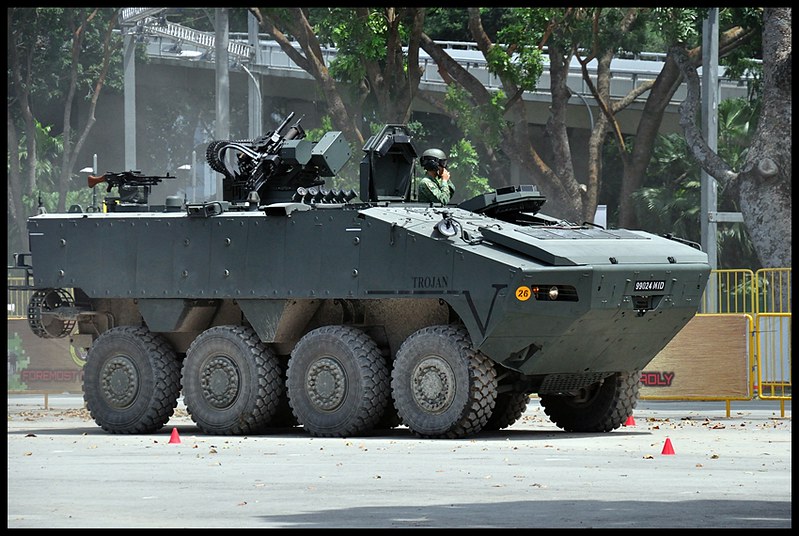
DSC_2159 by BQ-T, on Flickr Terrex Infantry Carrier Vehicle (ICV) 
DSC_2132 by BQ-T, on Flickr Bronco 
DSC_2129 by BQ-T, on Flickr BIONIX II 
DSC_2127 by BQ-T, on Flickr BIONIX II 
DSC_2098 by BQ-T, on Flickr MATADOR 
DSC_2090 by BQ-T, on Flickr ULTIMAX 100 
DSC_2089 by BQ-T, on Flickr SAR21 with M203 
DSC_2078 by BQ-T, on Flickr 
DSC_2071 by BQ-T, on Flickr 
DSC_2066 by BQ-T, on Flickr 
DSC_2064 by BQ-T, on Flickr 
DSC_2060 by BQ-T, on Flickr 
DSC_2057 by BQ-T, on Flickr 
DSC_2056 by BQ-T, on Flickr 
DSC_2053 by BQ-T, on Flickr 
DSC_2046 by BQ-T, on Flickr 
DSC_2041 by BQ-T, on Flickr HK416 
DSC_2017 by BQ-T, on Flickr Singapore Light Weight Howitzer (SLWH) Pegasus 155mm 
DSC_2010 by BQ-T, on Flickr |
|
|

DSC_2008 by BQ-T, on Flickr 
DSC_1982 by BQ-T, on Flickr 
DSC_1976 by BQ-T, on Flickr 
DSC_1967 by BQ-T, on Flickr 
DSC_1958 by BQ-T, on Flickr 
DSC_1956 by BQ-T, on Flickr 
DSC_1953 by BQ-T, on Flickr 
DSC_1950 by BQ-T, on Flickr 
DSC_1948 by BQ-T, on Flickr Major-General (MG) Ravinder Singh Chief of the Singapore Army addressing the troops 
DSC_1945 by BQ-T, on Flickr SAF Soldiers in old equipment 
DSC_1944 by BQ-T, on Flickr 
DSC_1935 by BQ-T, on Flickr 
DSC_1929 by BQ-T, on Flickr 
DSC_1920 by BQ-T, on Flickr 
DSC_1917 by BQ-T, on Flickr 
DSC_1910 by BQ-T, on Flickr 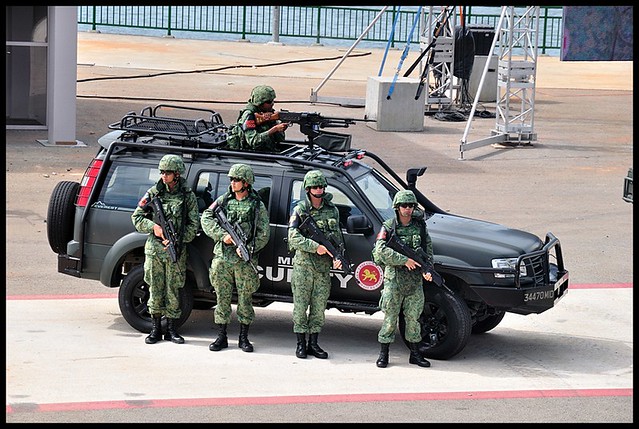
DSC_1903 by BQ-T, on Flickr 
DSC_1888 by BQ-T, on Flickr 
DSC_1885 by BQ-T, on Flickr 
DSC_1882 by BQ-T, on Flickr 
DSC_1880 by BQ-T, on Flickr 
DSC_1878 by BQ-T, on Flickr 
DSC_1871 by BQ-T, on Flickr 
DSC_1833 by BQ-T, on Flickr 
DSC_1822 by BQ-T, on Flickr 
DSC_1795 by BQ-T, on Flickr 
DSC_1782 by BQ-T, on Flickr 
DSC_1773 by BQ-T, on Flickr 
DSC_1769 by BQ-T, on Flickr |
|
|

DSC_1750 by BQ-T, on Flickr 
DSC_1749 by BQ-T, on Flickr 
DSC_1740 by BQ-T, on Flickr 
DSC_1717 by BQ-T, on Flickr 
DSC_1715 by BQ-T, on Flickr 
DSC_1712 by BQ-T, on Flickr Combat Engineers demo destroying "Suspected IED" 
DSC_1696 by BQ-T, on Flickr 
DSC_1693 by BQ-T, on Flickr 
DSC_1684 by BQ-T, on Flickr 
DSC_1681 by BQ-T, on Flickr 
DSC_1605 by BQ-T, on Flickr 
DSC_1598 by BQ-T, on Flickr Old 3 Tonner Truck 
DSC_1595 by BQ-T, on Flickr 
DSC_1586 by BQ-T, on Flickr 
DSC_1583 by BQ-T, on Flickr |
|
|
|
Ahhh Singapore... Fond memories of newton circus, orchard rd and great food. If I ever move overseas again it will be back to Singapore. Awesome pics! Make me miss it there
|
|
|
|
Quoted:
Thanks OP ! What make of drone is that ? ST Aerospace Skyblade IV tactical UAV |
|
|
|
I've always been impressed by their indigenous weapons industry, Bionix and such. Love the Leo 2A4 upgrades and I didn't know they bought HIMARS, learn something new. Thanks for the pictures.
|
|
|
|
That 416 is only a new trigger guard away from being the photographer's.

|
|
|
|
Cool stuff, thanks for posting.
On that MBT (haven't looked up the specs), aren't you giving up front turret protection for the gunner's sight? Seems that would negate any advantage of a lower profile (with the other thing and MG up there anyways). I guess it is protected better from side shots or fragments to the lens. Edit: I see this was the earlier position, on some later Leopard 2s the sight is moved up when they put the angled armor applique on the front. I like that Bionix II IFV, what's that little tube above the 30mm gun? I thought it might be a neat location for a coax, but reading the specs shows 2x GPMG which are above and at the rear. |
|
|
|
Quoted:
I like that Bionix II IFV, what's that little tube above the 30mm gun? I thought it might be a neat location for a coax, but reading the specs shows 2x GPMG which are above and at the rear. That little tube is the COAX, in total there are 4 mounting points but generally only 3 are mounted (Cmdr. MG, COAX and side MG) on the BIONIX II. |
|
|
|
I would say that Singapore should be grateful to the U.S. for what they have.
|
|
|
|
Great pics. Thanks for taking the time.
Posted Via AR15.Com Mobile |
|
|
|
Quoted:
I would say that Singapore should be grateful to the U.S. for what they have. Grateful? They bought all that equipment with their own money. |
|
|
|
Singapore has one HELL of a Military for such a small country.
They would not go down without a fight. |
|
|
|
Quoted:
Quoted:
I would say that Singapore should be grateful to the U.S. for what they have. Grateful? They bought all that equipment with their own money. You know...the whole WW2 thing with the japs taking Singapore, then us fighting them. |
|
|
|
Quoted:
Quoted:
I would say that Singapore should be grateful to the U.S. for what they have. Grateful? They bought all that equipment with their own money. Well, good for them. I hope they know how to employ it. |
|
|
|
I have seen Singapore AF pilots here at Rucker learning to fly Chinooks.
|
|
|
|
That was some of the best trigger discipline ive seen throughout those pics.
|
|
|
|
Great pics, thanks for sharing.
How big is the military there? |
|
|
|
Quoted:
Quoted:
Quoted:
I would say that Singapore should be grateful to the U.S. for what they have. Grateful? They bought all that equipment with their own money. You know...the whole WW2 thing with the japs taking Singapore, then us fighting them. Can't you just thank the OP for posting the pics? Thanks OP. OP is in the Singapore Army IIRC. |
|
|
|
Thanks for the comments

DSC_1588 by BQ-T, on Flickr 
DSC_1587 by BQ-T, on Flickr 
DSC_1590 by BQ-T, on Flickr 
DSC_1589 by BQ-T, on Flickr 
DSC_1592 by BQ-T, on Flickr 
DSC_1591 by BQ-T, on Flickr 
DSC_1594 by BQ-T, on Flickr 
DSC_1593 by BQ-T, on Flickr 
DSC_1601 by BQ-T, on Flickr 
DSC_1602 by BQ-T, on Flickr 
DSC_1603 by BQ-T, on Flickr 
DSC_1631 by BQ-T, on Flickr 
DSC_1642 by BQ-T, on Flickr 
DSC_1686 by BQ-T, on Flickr 
DSC_1727 by BQ-T, on Flickr 
DSC_1744 by BQ-T, on Flickr 
DSC_1755 by BQ-T, on Flickr 
DSC_1851 by BQ-T, on Flickr 
DSC_1855 by BQ-T, on Flickr 
DSC_1828 by BQ-T, on Flickr 
DSC_1858 by BQ-T, on Flickr 
DSC_1875 by BQ-T, on Flickr 
DSC_1887 by BQ-T, on Flickr 
DSC_1896 by BQ-T, on Flickr 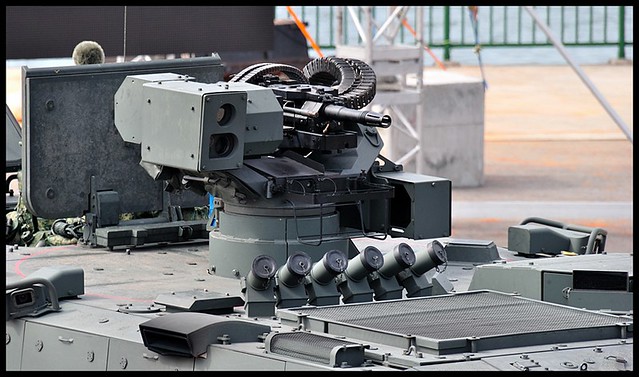
DSC_1892 by BQ-T, on Flickr 
DSC_1901 by BQ-T, on Flickr 
DSC_1915 by BQ-T, on Flickr 
DSC_1964 by BQ-T, on Flickr 
DSC_1969 by BQ-T, on Flickr 
DSC_1971 by BQ-T, on Flickr 
DSC_1974 by BQ-T, on Flickr 
DSC_1978 by BQ-T, on Flickr 
DSC_1979 by BQ-T, on Flickr 
DSC_1984 by BQ-T, on Flickr 
DSC_1988 by BQ-T, on Flickr 
DSC_1989 by BQ-T, on Flickr 
DSC_1995 by BQ-T, on Flickr 
DSC_1991 by BQ-T, on Flickr |
|
|

DSC_1999 by BQ-T, on Flickr 
DSC_2002 by BQ-T, on Flickr 
DSC_2000 by BQ-T, on Flickr 
DSC_2007 by BQ-T, on Flickr 
DSC_2170 by BQ-T, on Flickr 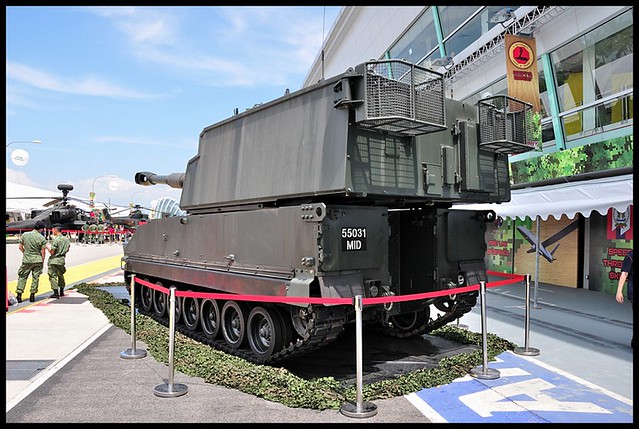
DSC_2166 by BQ-T, on Flickr 
DSC_2013 by BQ-T, on Flickr 
DSC_2014 by BQ-T, on Flickr 
DSC_2015 by BQ-T, on Flickr 
DSC_2016 by BQ-T, on Flickr 
DSC_2018 by BQ-T, on Flickr 
DSC_2019 by BQ-T, on Flickr 
DSC_2021 by BQ-T, on Flickr ARTHUR "Artillery Hunting Radar" 
DSC_2022 by BQ-T, on Flickr ARTHUR "Artillery Hunting Radar" 
DSC_2028 by BQ-T, on Flickr 
DSC_2031 by BQ-T, on Flickr 
DSC_2033 by BQ-T, on Flickr 
DSC_2037 by BQ-T, on Flickr 
DSC_2035 by BQ-T, on Flickr 
DSC_2082 by BQ-T, on Flickr 
DSC_2083 by BQ-T, on Flickr 
DSC_2084 by BQ-T, on Flickr 
DSC_2038 by BQ-T, on Flickr 
DSC_2058 by BQ-T, on Flickr 
DSC_2054 by BQ-T, on Flickr |
|
|
|
1st Photo: Leopard L2SG
15th Photo: Leopard 2 Bridging Vehicle 
DSC_2049 by BQ-T, on Flickr CIS 40mm AGL 
DSC_2059 by BQ-T, on Flickr 
DSC_2063 by BQ-T, on Flickr 
DSC_2075 by BQ-T, on Flickr Leopard 2 Recovery Vehicle 
DSC_2106 by BQ-T, on Flickr Automated turret on Terrex 
DSC_2107 by BQ-T, on Flickr Vehicle Commander's seat in the Terrex 
DSC_2137 by BQ-T, on Flickr 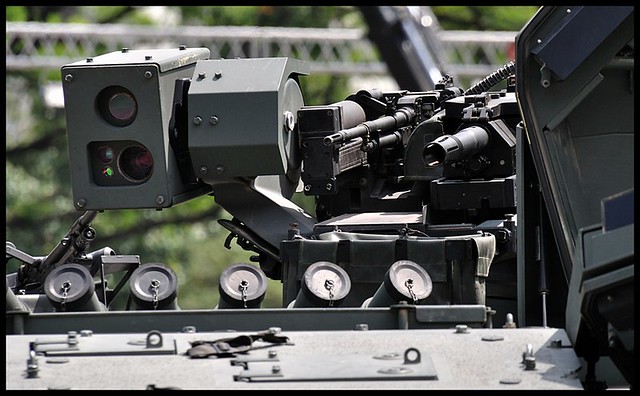
DSC_2161 by BQ-T, on Flickr Automated turret on Terrex 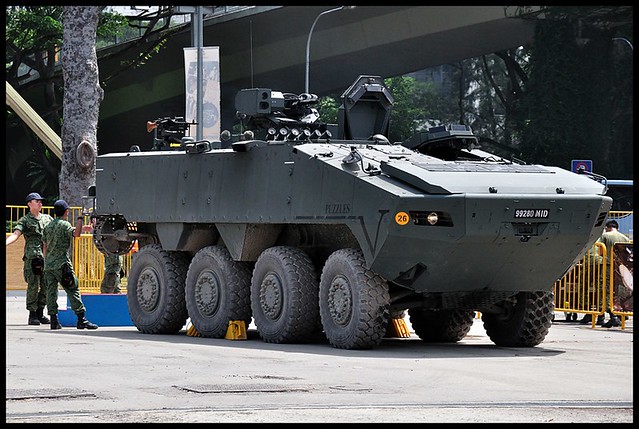
DSC_2157 by BQ-T, on Flickr 
DSC_2155 by BQ-T, on Flickr 
DSC_2115 by BQ-T, on Flickr Flyer 21 LSV 
DSC_2116 by BQ-T, on Flickr 
DSC_2140 by BQ-T, on Flickr 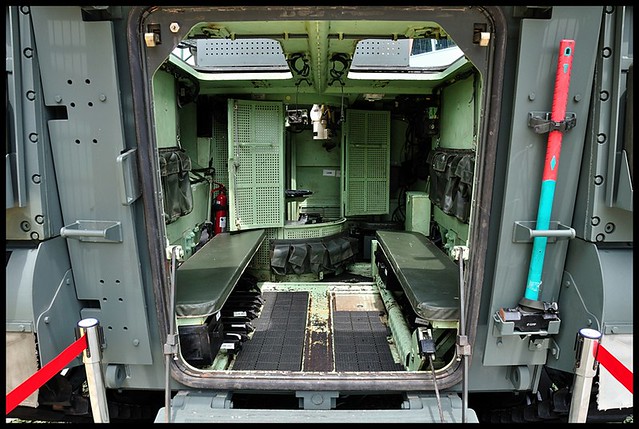
DSC_2121 by BQ-T, on Flickr Interior of Bionix II 40/50 
DSC_2162 by BQ-T, on Flickr 
DSC_2164 by BQ-T, on Flickr 
DSC_2197 by BQ-T, on Flickr 
DSC_2237 by BQ-T, on Flickr 
DSC_2236 by BQ-T, on Flickr 
DSC_2245 by BQ-T, on Flickr 
DSC_2246 by BQ-T, on Flickr |
|
|
|
Who do they think they might have to fight?
Any terretorial disputes in their region? |
|
|
|
If you're curious as to how and why things are with the Singapore Armed Forces, the following article might answer it.
A deep, dark, secret love affair A team of IDF officers, known as the `Mexicans,' helped Singapore establish an army. It was the start of a very special relationship. Christmas Eve, 1965, is the unofficial date of the start of the great and continuing love story between Israel and Singapore, a love affair that was kept a deep, dark secret. The international press, like the Israeli media, tried to bring the tale to light. Occasionally, scraps of information leaked out; some were published, some were denied, many were disregarded. The Israelis, as usual, wanted to rush to tell all their friends, but managed to overcome that desire. The fear that the thies would be terminated if they became public knowledge had its effect. Israel imposed a total blackout on the story and the secret was preserved. Until the other side could no longer contain itself. In his book, "From Third World to First: The Singapore Story 1965-2000," published in 2000, Lee Kuan Yew, Singapore's founding father and its first prime minister, disclosed the secret that had been kept for almost 40 years: It was the Israel Defense Forces that established the Singaporean army. The Israeli military mission was headed by Yaakov (Jack) Elazari, then a colonel, who was later promoted to brigadier general. After leaving the army, he became a consultant to the Singaporean army. Hedied 15 years ago. "To disguise their presence, we called them `Mexicans.' They looked swarthy enough," Lee wrote. Singapore's army is today considered the strongest and most advanced of the military forces in Southeast Asia. The alliance between the Israeli and Singaporean defense establishments intensified and expanded, and it now encompasses cooperation between the two countries' military industries, as well. The scope of the deals, according to foreign sources, indicates that the Singaporean army is one of the major clients of Israeli combat means and military technology. Singapore's aircraft industry is cooperating with its Israeli counterpart and with Elbit Systems in upgrading the F-5 warplanes of the Turkish Air Force. A few years ago, Singapore's defense minister revealed that the Gil antitank missile, which is manufactured by Raphael (Israel Armaments Development Authority), was developed in cooperation between the two countries. Surrounded by Muslims Lee explained the need to maintain secrecy to his close friend in the leadership, and the first defense minister in his government, Dr. Goh Keng Swee. "We have to ensure, as far as possible, that the arrival of the Israelis will not become public knowledge, in order not to arouse opposition among the Malay Muslims who live in Malaysia and Singapore," the prime minister summed up. That, in essence, is Singapore's problem. The residents of the small island, which has an area of about 670 square kilometers (Israel is 30 times as large), are mainly Chinese, and they live between the two Muslim countries of Malaysia and Indonesia. Life in the shadow of the large Muslim majority and fear of a Malaysian incursion are an integral part of the history of the two countries. Until 1965, Singapore was part of Malaysia. In that year, the British government decided to withdraw from all its colonies east of the Suez Canal. In a rapid process it was decided to sever Singapore from Malaysia and to establish it as a new and separate country. Singapore declared its independence on August 9, 1965. At the time of its creation, it had only two infantry regiments, which had been established and were commanded by British officers. Two-thirds of the soldiers were not residents of Singapore, and in any event the leaders of the nascent state had no faith in the strength of the minuscule army. The defense minister, Goh, contacted Mordechai Kidron, the former Israeli ambassador to Thailand, and asked for assistance. Kidron arrived in Singapore within days, along with Hezi Carmel of the Mossad. "Goh told us that they think that only Israel, a small country surrounded by Muslim countries, with a strong army, could help them build a small, dynamic army," Carmel says. The two Israelis met with Lee, who writes that he "told Keng Swee to put it on hold until Lal Bahadur Shastri, the prime minister of India, and President Nasser of Egypt replied to my letters seeking their urgent help to build up our armed forces." It's not clear whether Lee, in fact, believed India and Egypt were capable of, or interested in, building up Singapore's army. Many Israelis believe the two leaders were approached only for appearance's sake. After a few weeks of waiting, India and Egypt congratulated Singapore on its independence but did not offer military aid. Lee ordered Goh to push ahead in contacts with the Israelis. At the same time, in the wake of reports sent by Kidron and Carmel, the Israeli defense establishment deployed to supply military aid to Singapore. In discussions conducted by the chief of staff, Yitzhak Rabin, with the participation of the deputy chief of staff and head of the Operations Branch, Ezer Weizmann, it was decided to make Major General Rehavam Ze'evi, who was then deputy head of the Operations Branch, responsible for building the Singaporean army. Ze'evi (nicknamed "Gandhi" ) paid a secret visit to Singapore and the preparatory work began on his return. "Gandhi said he wanted to create an ideal army for Singapore, something we hadn't built here," Carmel says. "Instead of setting up a Defense Ministry and a General Staff, Gandhi suggested an integrated organization, a more economical structure. So there wouldn't be too many generals and too few soldiers." Ze'evi appointed Elazari, who worked under him in the Operations Branch, as head of the team he established. Lieutenant Colonel Yehuda Golan, then-commander of an armored division (he retired from the IDF with the rank of brigadier general), was subsequently added to the team. Some members of the team "concentrated on writing the chapters that dealt with building army bases. I wrote the chapters dealing with the establishment of an infantry," Golan says. Initially they produced the "Brown Book," dealing with combat doctrine, followed by the "Blue Book," dealing with the creation of the Defense Ministry and intelligence bodies. The Brown Book was translated into English and sent to Singapore's government for its perusal. In October 1965, a military delegation from Singapore arrived in Israel. "The delegation arrived in order to tell us: `Well done, but to implement the book, you are invited to come to Singapore,'" Golan recalls. Prior to setting out, the members of the military mission were invited to the chief of staff's bureau. "Dear friends," Rabin said, "I want you to remember several things. One, we are not going to turn Singapore into an Israeli colony. Your task is to teach them the military profession, to put them on their legs so they can run their own army. Your success will be if at a certain stage they will be able to take the wheel and run the army by themselves. Second, you are not going there in order to command them but to advise them. And third, you are not arms merchants. When you recommend items to procure, use the purest professional military judgment. I want total disregard of their decision as to whether to buy here or elsewhere." Wake-up at 5:30 On December 24, 1965, about five months after Singapore became an independent state, six IDF officers and their families set out on an unknown mission. "Elazari and two other officers dealt with the establishment of the Defense Ministry," Golan relates. "My task, along with three other officers, was to establish the army." Elazari operated according to a number of basic principles, from which the original Israeli team and those who followed did not deviate. The first was to build up a cadre of local commanders and instructors. The second was that the instructional material would be written by the cadets who would be trained as officers. And the third was that practical training would be conducted by Singaporean instructors. "We wanted to recruit a group of 40-50 people who had some sort of military experience and would be ready to serve in a career army," Golan explains. "We organized things so that they would appoint one of their number to serve as commander. As head of the group, the cadets chose someone of Indian origin named Kirpa Ram Vij, who would eventually become chief of staff of the Singapore Armed Forces. For three months we gave an intensified officers course." The first course had an IDF format: wake-up at 5:30 A.M., calisthenics, personal arrangements, parade. Training began at 7:30 A.M. and went until 1 A.M. "After a few days of training a group of cadets showed up and said, `Colonel Golan, the Arabs aren't sitting on our heads here. What do we need this madness for?' I called Elazari and explained the situation. He arrived a few days later with Defense Minister Dr. Goh, who told the cadets, `Do what Colonel Golan tells you to do, otherwise you will do double.'" Parallel to conducting the course, the Israeli team supervised the establishment of the first military base, based on plans of the Israeli Engineering Corps. Construction of the base was completed in three months. In under a year, the Israeli team conducted a course for new recruits, a platoon commanders course and an officers course, on the basis of plans that were sent from Israel. All told, about 200 commanders were trained. Jobless instead of soldiers Once the staff of commanders was ready, it was possible to start creating the standing army on the basis of conscription. The Israelis prepared to establish two more infantry regiments, according to the IDF model, with each regiment consisting of three companies of riflemen, an auxiliary company and an administrative company - a total of 600 soldiers. Lieutenant Colonel Moshe Shefi, who was an instructor in a company commanders course, was sent as an adviser. "We discovered that there was psychological resistance to conscription in Singapore," he relates. "Of 10 professions, that of soldier was ranked last. In first place was the artist, followed by the philosopher, the teacher and the merchant, and the thief was in ninth place. Soldiering was considered a contemptible profession. In Singapore, conscription was considered a means to overcome unemployment." The Israelis faced a problem. To evade service, most of the young men of draft age (18-24) who were of Chinese origin furnished proof that they were employed. Some 70 percent of the inductees were unemployed and of Malaysian origin - the opposite of their proportion within the population. Elazari and Golan complained to Lee and Goh, but the prime minister was undeterred. "I want you to recruit the most primitive people in the country, the uneducated and the jobless," he told them. Stunned, the Israelis tried to persuade him to reconsider, but he was adamant: "In the Second World War, I saw the Japanese and the British. All the British soldiers were intelligent and educated. But as soldiers they were worthless. The most primitive Japanese soldier gets an order and executes it, and they were extraordinary soldiers. The fact is that the Japanese army defeated the British army." Golan says, "Yaakov and I tried to explain to him that it's not a question of education but of motivation. The Japanese soldier was motivated because he was fighting for his emperor, who for him was God. For him, he was ready to sacrifice his life. What motivation did the British soldier have, who fought thousands of kilometers from his home?" The explanations about the spirit of combat and about how to generate motivation persuaded Lee. Along with the two tracks of compulsory service and career army, Singapore also adopted the IDF's model of reserve service. Every soldier who completed his regular service was obligated to serve another 13 years, until the age of 33. A system to mobilize the reserves was established and the Defense Ministry carried out surprise call-up exercises. Because of its small size and its lack of areas for live-fire training, Singapore had to establish training bases in friendly neighboring countries. Surprise tanks The unquiet in Singapore, and above all the fear of an invasion by Malay forces, together with the rapid development of the Singaporean army, generated additional needs. With the creation of the infantry, the Israeli team made an in-depth study of the battles fought by the Japanese in Southeast Asia during World War II and of how they succeeded in invading Malaysia and Singapore. Shefi was given the task of delivering a talk on the subject to Singapore's government. On the basis of the lessons the Israelis drew from the engagements fought by Japan and Britain, they created a naval force based on sampans. "The boats were made of wood and could carry 10 to 15 soldiers, and they were appropriate for the conditions of the sea and for the jungle rivers," Golan says. "On a stormy sea they can be operated with oars or a motor. We asked the Singaporeans to purchase 20 boats and we set up a small base where infantry companies trained in raids and navigation." Retired Colonel Asher Dar says, "The second team that arrived in Singapore applied what Yehuda Golan did in the form of combat doctrine. We trained in flanking maneuvers with small boats and in live fire using artillery. When the head of the training department, Yitzhak Hofi, visited Singapore, we carried out a model landing of an infantry brigade that set sail in boats at night at a distance of 12 kilometers with the aid of shore navigation only." The waiting period in Israel on the eve of the 1967 Six-Day War was a rough time for the Israeli team in Singapore. "We were relieved the Israelis were not defeated or our SAF [Singapore Armed Forces] would have lost confidence" in the Israeli instructors, Lee writes. In January 1968, Singapore decided to create an armored corps. In great secrecy, an agreement was signed for the purchase of 72 AMX-13 light tanks from IDF surplus. It was a bold decision: Malaysia, the country's large neighbor, didn't have tanks. On Independence Day, August 9, 1969, a major surprise awaited the invited guests, including the defense minister of Malaysia: 30 tanks rolled past the reviewing stand. "It had a dramatic effect," Lee writes. Malaysia had cause for concern. Its defense minister recommended to his guests that they take steps to persuade the Malaysian government that its intentions were not hostile. In the wake of the Israeli victory in 1967, the veil of secrecy over the ties between the two countries was lifted a bit. The Singapore delegate at the United Nations abstained in a vote on a resolution condemning Israel that was sponsored by the Arab states. Contacts began to establish full diplomatic relations. In October 1968, Lee permitted Israel to establish a trade mission and in May 1969 authorization was given for the establishment of an Israeli embassy in Singapore. The status of the Israeli military mission to Singapore was also strengthened, and the mission heads who followed held brigadier general rank. The first Israeli military delegation laid the foundations for an extensive network of relations between Israel and Singapore. Foundations of the air force The small Israeli team in Singapore was augmented by professional military advisers for the various corps. The chief armored corps officer, Major General Avraham Adan, arrived to give advice on procuring armored vehicles. In 1968, Adam Tzivoni, a retired colonel who had been head of the planning and weapons branch in the air force, was appointed adviser to the Singapore Armed Forces in regard to the creation of an air force. "As compensation for the hasty departure of the British army, the British government gave Singapore a grant of 50 million pounds to acquire British-made aerial systems: planes, helicopters and surface-to-air missiles," Tzivoni relates. "The British didn't like me at all. My first task was to approve the deals. It turned out that the English tried to sell Singapore junk. Apart from a deal for Hunters, I vetoed all the deals." Under Tzivoni's supervision, a flight school was established in Singapore, as well as a technical school, a squadron of Alouette 3 helicopters was purchased and 40 mm anti-aircraft guns were acquired. Uzis and Israeli marching songs After the creation of the Singaporean army's infantry regiments, the question arose of what weapons the nascent armed forces would use. The commanding officers wanted the Uzi, the Israeli submachine gun. The Israeli team took an objective view and rejected the idea. True, the Uzi was considered a superb weapon in the 1960s, but only for short ranges. A regular army needs an assault rifle, the Israeli team asserted. Representatives of Israel Military Industries exerted pressure on the Defense Ministry to sell the new Galil assault rifle. However, the team decided that the rifle wasn't yet full ready and recommended the American M-16. Another major headache for the Israelis concerned the decision about which mortars to procure for the new army. Infantry regiments are equipped with 60 - 52 mm and 18 mm mortars. The weapons, which were developed and manufactured by the Soltam company, based in the town of Yokne'am, were sold to the Israel Defense Forces and exported worldwide. "Even though we thought these were the best mortars, we decided not to recommend them but to make use of an independent source in order to reach a decision," says Yehuda Golan, a member of the team sent to Singapore. The Israeli team asked a British firm that dealt in organization and consultation on military subjects to examine a series of mortars and recommend the best one. The report stated that the best of the lot was an 18 mm mortar manufactured in Britain. However, considering the price, the recommendation was to buy the Soltam product. The Singapore Armed Forces acquired the Israeli mortar. "The Israelis emphasized military skills and high motivation. Smartness on parade and military tattoo, the SAF [Singapore Armed Forces] never learned from the `Mexicans.' Whatever smartness the SAF had" derived from the British officers who commanded the army's first two regiments, Lee writes. "Our motto was that we would not stick our nose into what the Singaporeans could do themselves," Golan notes. "They wanted us to organize the Independence Day parade for them. We argued that a state military parade reflects the country's mentality and its history." The Singaporeans didn't make an issue of it. However, they had a problem that demanded an immediate solution - which marches to play as the soldiers marched in unison. The head of the Israeli mission, Yaakov Elazari, brought notes from Israel and the Singapore army strode to Israeli marching songs. The jungle combat manual The Singaporeans took the Israelis by surprise when they insisted on getting a course on jungle combat. Singapore has a tiny natural jungle of no more than five or six square kilometers, but the neighboring states have larger jungles. Yehuda Golan: "I told them they were right but that I wasn't the right guy, because I knew nothing about jungles." Nevertheless, the Israeli team began to find out how to cope with the subject. It was decided to send two Singapore officers as guests of the Malaysian army for a course on jungle combat. "Three months later, the two officers returned with the knowledge they acquired in Malaysia, and we decided to conduct a course in jungle combat," Golan continues. "Out of curiosity, I decided to join. It looked very bad - it was clear that they had taught them British methods from the Second World War period. I decided to take a group of 10 officers. We entered the jungle and started to engage in war games. We trained in navigation, deploying forces, search and assault. We went through the American training manuals on combat in Vietnam. We developed methods of night navigation. We learned how to function with a fighting company in the dense undergrowth. After a few weeks of training, I wrote the training manual of the Singapore Armed Forces for jungle combat." |
|
|
|
Quoted: [email=http://www.flickr.com/photos/61892799@N08/7294454960/]http://farm8.staticflickr.com/7230/7294454960_630f4c69a4_z.jpg[/email] DSC_1971 by BQ-T, on Flickr whats this? giant flechette? |
|
|
 Win a FREE Membership!
Win a FREE Membership!
Sign up for the ARFCOM weekly newsletter and be entered to win a free ARFCOM membership. One new winner* is announced every week!
You will receive an email every Friday morning featuring the latest chatter from the hottest topics, breaking news surrounding legislation, as well as exclusive deals only available to ARFCOM email subscribers.
AR15.COM is the world's largest firearm community and is a gathering place for firearm enthusiasts of all types.
From hunters and military members, to competition shooters and general firearm enthusiasts, we welcome anyone who values and respects the way of the firearm.
Subscribe to our monthly Newsletter to receive firearm news, product discounts from your favorite Industry Partners, and more.
Copyright © 1996-2024 AR15.COM LLC. All Rights Reserved.
Any use of this content without express written consent is prohibited.
AR15.Com reserves the right to overwrite or replace any affiliate, commercial, or monetizable links, posted by users, with our own.

